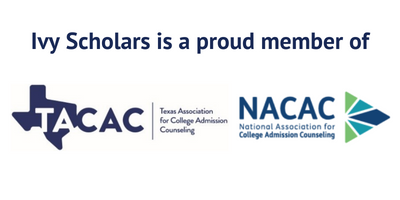Medical school applications are incredibly centralized, due to the close cooperation and coordination of medical schools. The American Association of Medical Colleges (AAMC), collects and publishes a lot of data every year on applicants and acceptances, something which is very helpful for hopeful premeds to evaluate their chances.
In this article, we’re going to cover where you can find this data, and the takeaways from it we can make. We will also cover important caveats in this data; while it is all very useful, it is not the full picture of what medical schools look at. There is no data on what makes for the best essay or interview. That said, let’s get started!
Where to Find AAMC Data
Luckily for everyone involved, the AAMC publishes all of their data yearly online. You can also examine past data if you want to see how admissions trends have varied over time. This data is conveniently separated by category, so you can see the trends on different variables, and their impact on admissions.
We will say, however, that they lack some multivariable charts. You can track the impact of race, or gender, or major, or college of origin, but not all of these factors at once. In many ways, this makes sense. The more granularly you break down applicant data, the harder it becomes to anonymize.
Especially when talking about smaller colleges which may only have a few dozen premeds each year, it becomes easy when looking at granular data to guess which students got in and which didn’t. We can understand why the AAMC wants to avoid this breach of privacy; while it makes things more difficult to analyze which factors medical schools care about the most, we respect their motivations here.
We will not be covering all of the data they present in this article, because there is a lot of it. We encourage you to go through it on your own, just to see the scope of what they collect, and to see how it may impact your own decisions on where it’s best to apply.
GPA, MCAT Score, and Admissions Chances
The two most important factors when evaluating your chances of medical school admission are your GPA and MCAT score. While these are not the only things medical schools care about, they are the first thing they look at, and are used as a benchmark to decide which candidates deserve a second look.
Thus having high scores does not guarantee you will get accepted, but having low ones is definitely a mark against you. We can see that clearly in the aggregated data.
There are a few things that stand out on this table, and that we feel are worth pointing out. The first is that even among the most qualified candidates, those in the top right corner with near perfect GPAs and MCAT scores, the acceptance rate is not 100%. Sure, at 82.9% it’s nearly twice the overall average of 43%, but this indicates that GPA and MCAT are not enough on their own.
While these are very important factors, and having great scores does give you a much easier path to admissions, medical schools are looking for more than just great scholars. Being a doctor is really hard, and requires factors that are hard to test for; this is why they require essays and interviews. Your numerical scores are important, but they are not the only things you will be judged on.
The next thing worth noting is that at certain levels, your chances of acceptance drop to nearly 0. An MCAT score below 500, or a GPA below 3.5 both significantly hurt your chances of acceptance. It’s not impossible; the table shows a handful of students getting in with lower scores, but it is far from likely. If you have a serious weakness in one or both areas, you should consider strengthening it before attempting to apply, so that you don’t waste your time.
Finally, a strong GPA does not compensate for weak MCAT scores, and vice versa. Doing too poorly on either component is enough to severely hurt your chances of acceptance to medical school. Both components are important, and you cannot shore up weakness in one area with high performance in another.
Race and Medical School Admissions
The Supreme Court banned the use of race in admissions for colleges, and the same provisions now apply to medical schools as well. That said, in their holistic review of applicants, medical schools do look for diversity, and argue that doing so is important for creating equitable health outcomes.
We can see in the data how race seems to impact admissions chances at medical schools using this table:
| Race | Average MCAT of Matriculants | Average GPA of Matriculants | Acceptance Rate |
| American Indian or Alaskan Native | 502.2 | 3.64 | 40% |
| Asian | 514.3 | 3.83 | 46.8% |
| Black | 505.7 | 3.59 | 39.5% |
| Hispanic/Latino | 506.4 | 3.66 | 46.9% |
| Native Hawaiian or Pacific Islander | 507.3 | 3.65 | 33.3% |
| White | 512.4 | 3.80 | 45.1% |
| Other | 511.9 | 3.80 | 38.2% |
| Multiple | 510.6 | 3.73 | 45.4% |
| Unknown | 513.6 | 3.80 | 38.8% |
| Non-US Citizen | 512.7 | 3.77 | 15.2% |
So what does this data tell us? Note that this is data from only one year, but if we look at previous years as well (which AMCAS kindly provides access to on their site), we can see some trends persist. These are the main takeaways we can see from this data:
- That Asian student have the highest average GPA and MCAT scores of medical school matriculants
- That Black, Hispanic, and Native students have slightly lower scores on average
- That international students have a much harder time getting into medical school than US citizens and permanent residents
Now let’s go through these in order, and see why these are the case.
Asian American Students
Two things stand out in the data. The first is that Asian Americans, as a share of overall applicants and acceptances, are significantly overrepresented compared to their share of the American population. While there are many factors that contribute to this, we cannot overlook the cultural ones. There is a stereotype that Asian American parents strongly encourage their children to enter medicine, but there is a grain of truth to that.
Add onto that fact that the children of physicians are more likely to enter medicine themselves. Thus, once a group has entered medicine, it tends to propagate forward through the generations.
The next thing to note is that Asian American students have higher scores, on average, than any other group of students accepted into medical school. As we saw in the Harvard admissions case, this leads to an important question: do medical school admissions discriminate against Asian applicants.
Officially, no. There is evidence for this as well, with 46.8% of applicants accepted, Asian students saw one of the highest success rates of any racial group in admissions this year. This suggests that as a whole, all Asian applicants had higher scores on average than other groups.
Why would admissions then not admit even more Asian applicants; if, as the scores suggest, many more of them were likely qualified based on the scores alone? We cannot say for certain, but believe the answer lies elsewhere in the applications. While there may be no official racial quotas, medical schools do seek diversity in applicants, and seek to build a class with a range of backgrounds and experiences.
While this might not be an explicit bias against Asian applicants, beliefs that they all have similar viewpoints and experiences could work against them in admissions decisions. Regardless of the truth of this assumption or not.
Black and Hispanic Students
Black and Hispanic students show an inverse of the trends for Asian students, with lower grades and MCAT scores, on average, than other accepted students. We should note that based on the first table we examined, these students are still qualified based on the cross section of their scores; their averages as a population are just lower.
Does this mean medical schools unfairly advantage these students? Not necessarily. Instead, they look for students who are qualified academically, and who can then add new perspectives to the table. Medical schools are committed to a diversity of viewpoints, and believe this is a good way to address disparities in medical care.
International Students
Just as with undergrad, it is harder to get accepted to medical school if you are an international student. This is due to a preference for US universities, which are thought to do a more thorough job preparing students for what medical school will ask of them, and for the structural barriers which can make applying harder for international students.
This isn’t to say that it’s impossible to get into a US medical school if you are an international student, but that it is likely going to be harder for you than an equivalently qualified US resident.
For all of these groups, we want to point out that MCAT and GPA are still not the only things considered. You need to be academically qualified for medical school, but these qualifications are not enough on their own. Your activities, essays, and interviews are all key to securing an offer of admission.
Gender and Medical School Admissions
We have covered before how gender impacts undergraduate admissions, but is the same true for medical school? The AAMC provides us data to answer this question:
| Gender | MCAT | GPA | Acceptance Rate |
| Male | 512.7 | 3.77 | 45% |
| Female | 510.9 | 3.78 | 42.8% |
Note that the table linked above does not show us the number of applications by gender; for that we need to turn to this table. Of note here is that many many more women are applying to medical school than men. While the academic standards are the same for applicants regardless of gender, men have an easier time standing out amongst applicants, as there are fewer of them in the process.
Note that more women than men are admitted into medical schools, but not at a ratio commensurate with the differences in the number of applicants. While medical schools may not enforce gender ratios, they do look for a diversity of backgrounds and experiences, which does advantage male applicants.
Undergraduate Major and Medical College Admissions
We’ve discussed how specific majors impact your chances of medical school before, and how you can apply to medical school with the preparation provided by any major in coordination with the premed curriculum. Here is the latest data on how different majors prepare students for the requirements of medical school admissions:
| Major | MCAT | GPA | Acceptance Rate |
| Biological Sciences | 511.5 | 3.78 | 43.4% |
| Humanities | 513.1 | 3.76 | 51.8% |
| Math | 516.1 | 3.79 | 52.3% |
| Other | 511.2 | 3.78 | 41.6% |
| Physical Sciences | 513.8 | 3.77 | 49.5% |
| Social Sciences | 511.6 | 3.73 | 42.6% |
| Specialized Health Sciences | 510.2 | 3.77 | 40.5% |
Interesting to note is that all of these are in a fairly tight window; while there are some discrepancies in scores, they aren’t major, especially in overall GPA. Math has the highest MCAT scores; specialized health majors the lowest, but all are uniformly quite high.
Notable is that math and humanities see higher acceptance rates than other majors. We believe this is in part because these are some of the least popular majors for students applying to medical school. Once again, this provides students with the unique viewpoints and experiences admissions officers look for, so long as they also have the needed academic credentials.
We also want to note that specialized health majors have the lowest acceptance rate. The pre med course of study is all you need to prepare for medical school. We recommend only pursuing a specialized health major if you want to focus on a niche field such as public health; otherwise it is not needed.
Final Thoughts
This is far from all of the data released by the AAMC, but should provide a solid overview of the most relevant points for aspiring medical students. Of course, you should not draw firm conclusions from aggregated data, as these points do not tell the full story of any applicant. They can, however, give you a good sense of the benchmarks you need to aim for with your MCAT and GPA to be competitive for admissions.
As we have stated several times, a medical school application begins with these stats, but does not end with them. If you want help crafting your own essays, preparing for your interviews, or finding the right activities to set you up for medical school, schedule a free consultation today. We have a deep experience with what admissions committees are looking for, and enjoy helping students achieve their academic goals.








